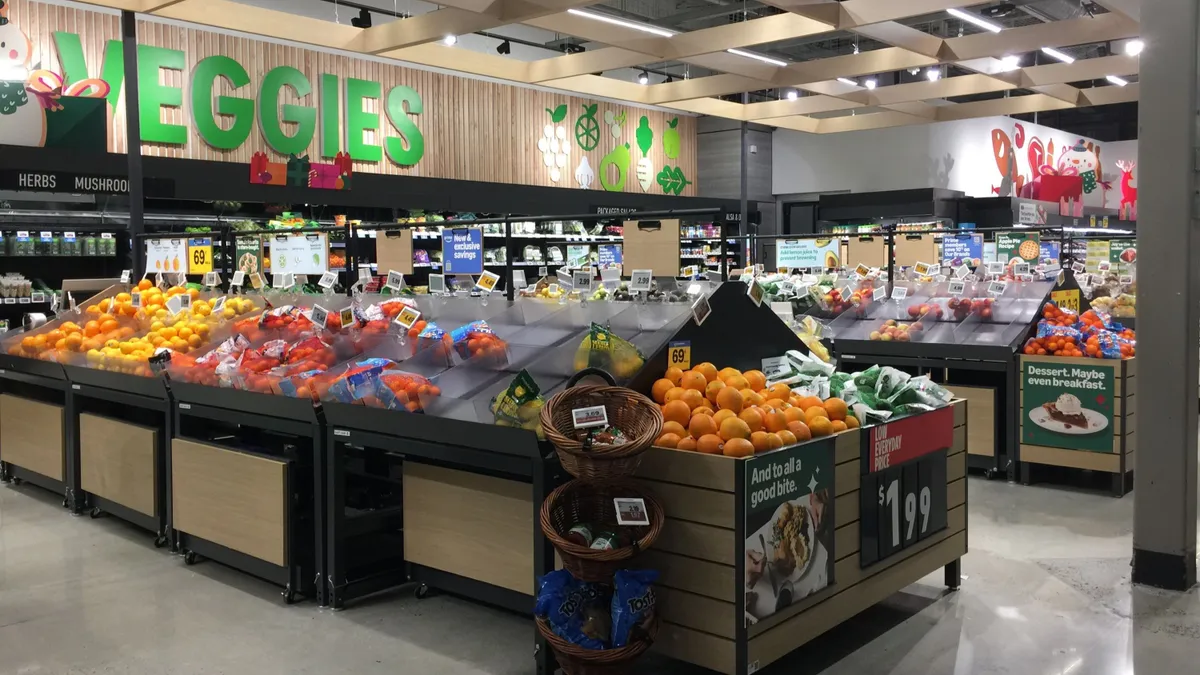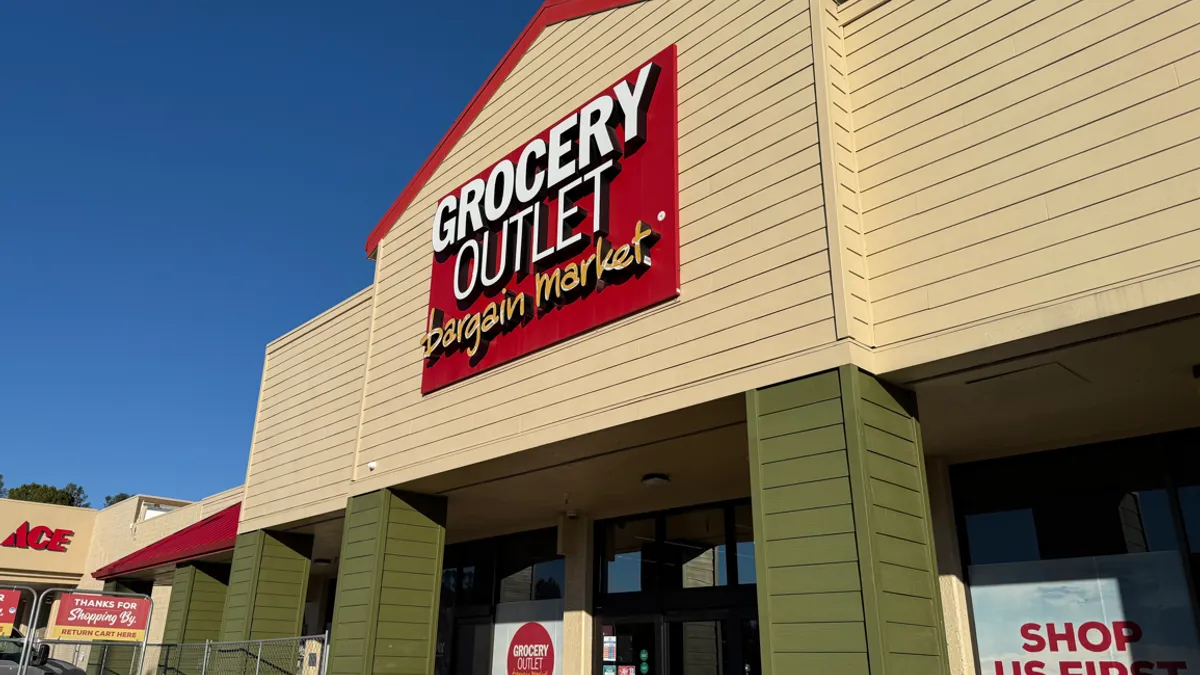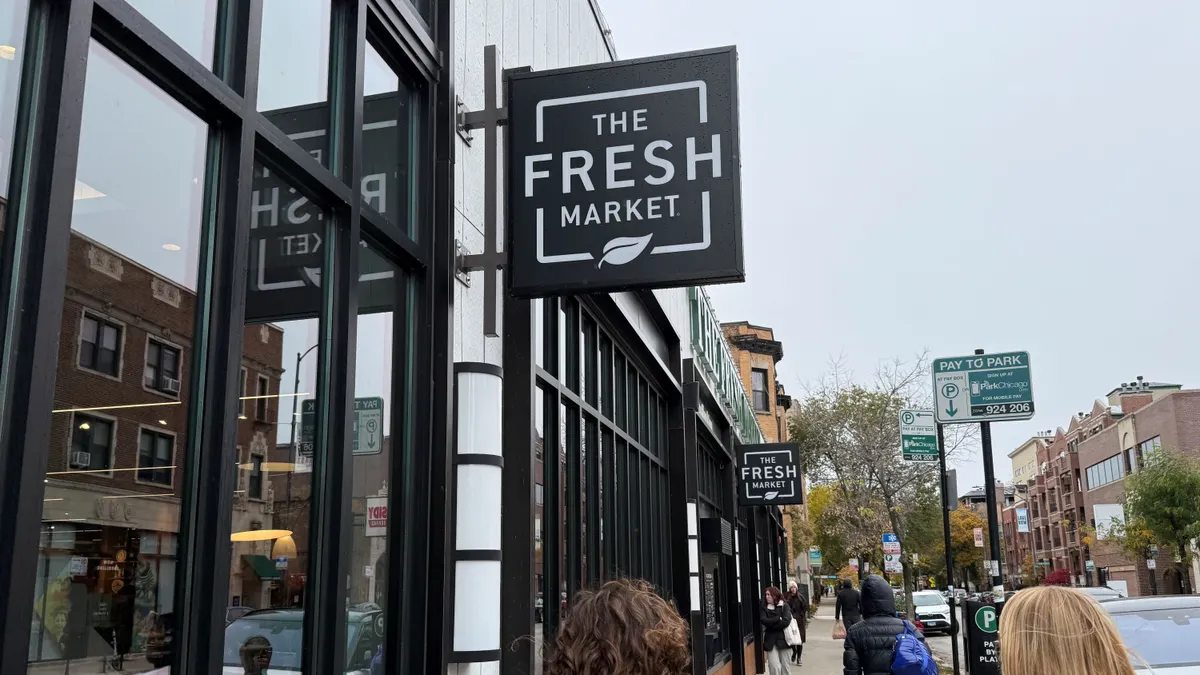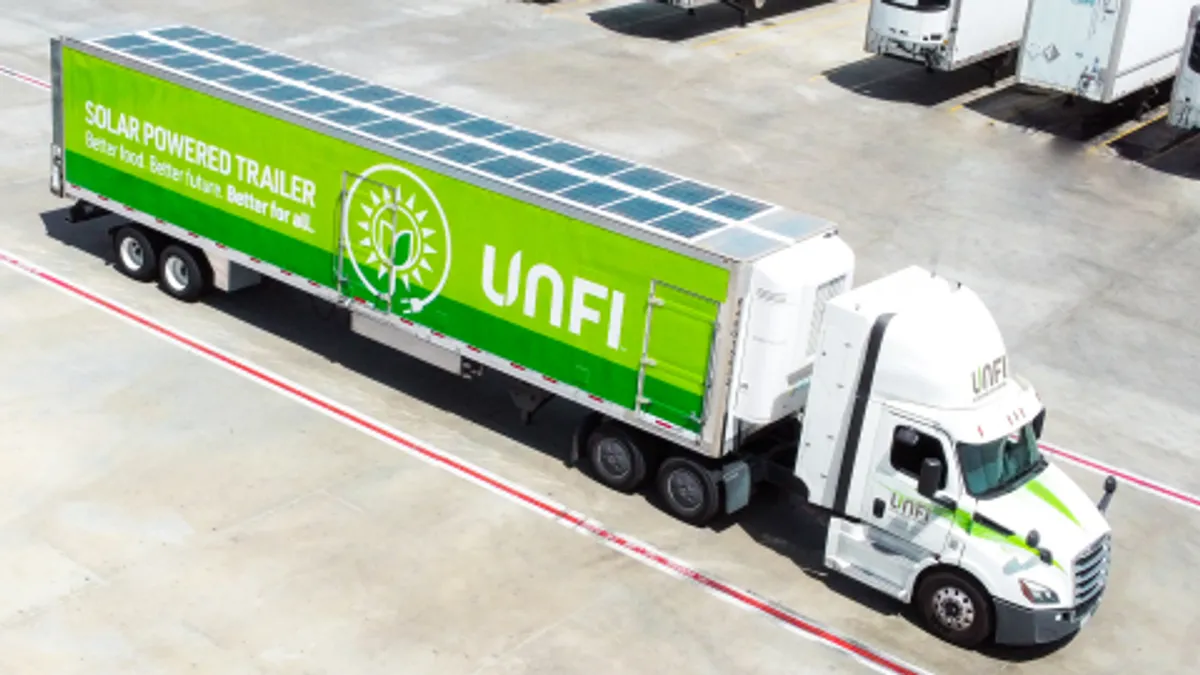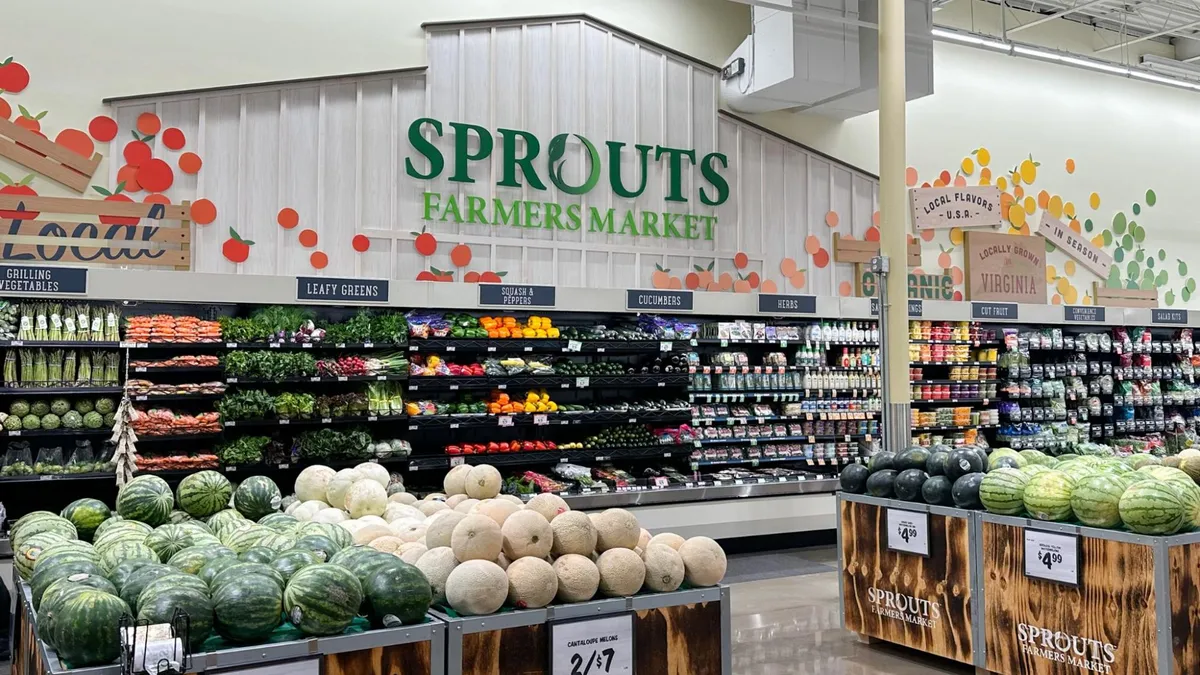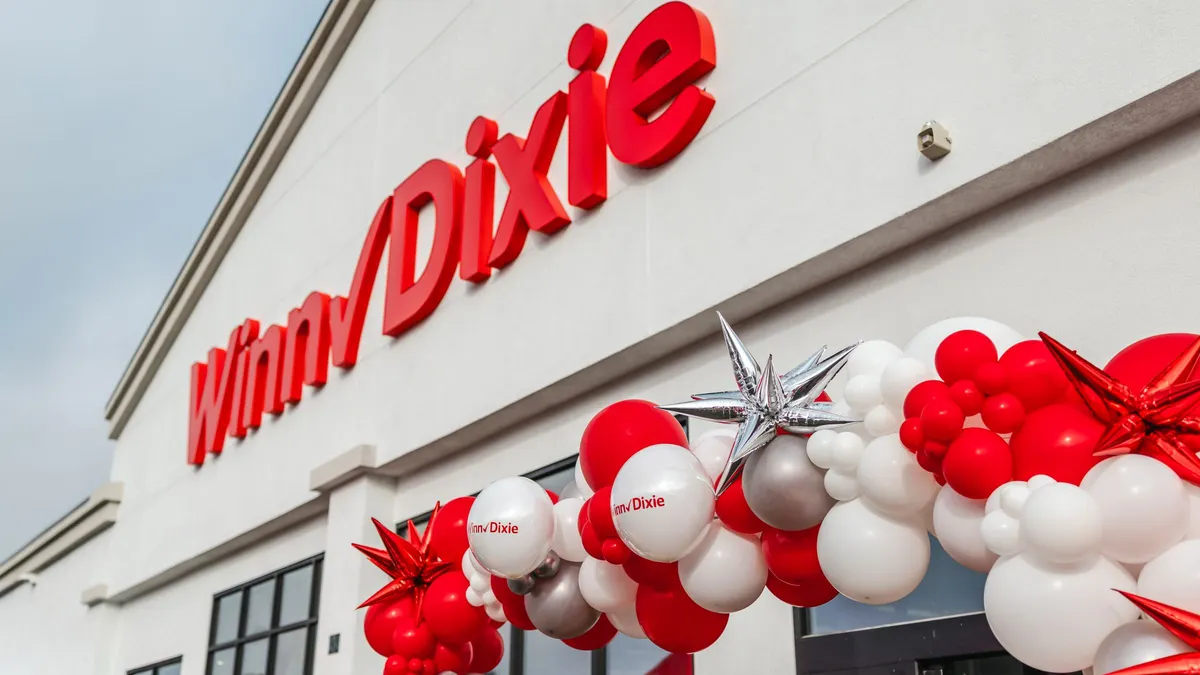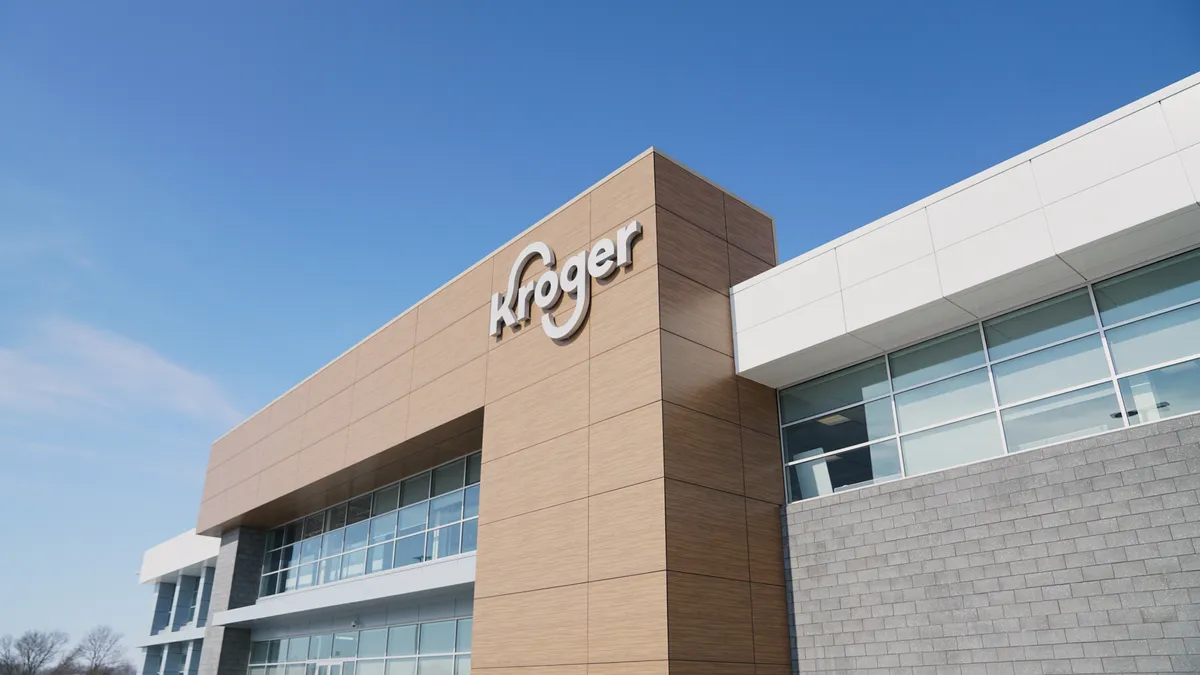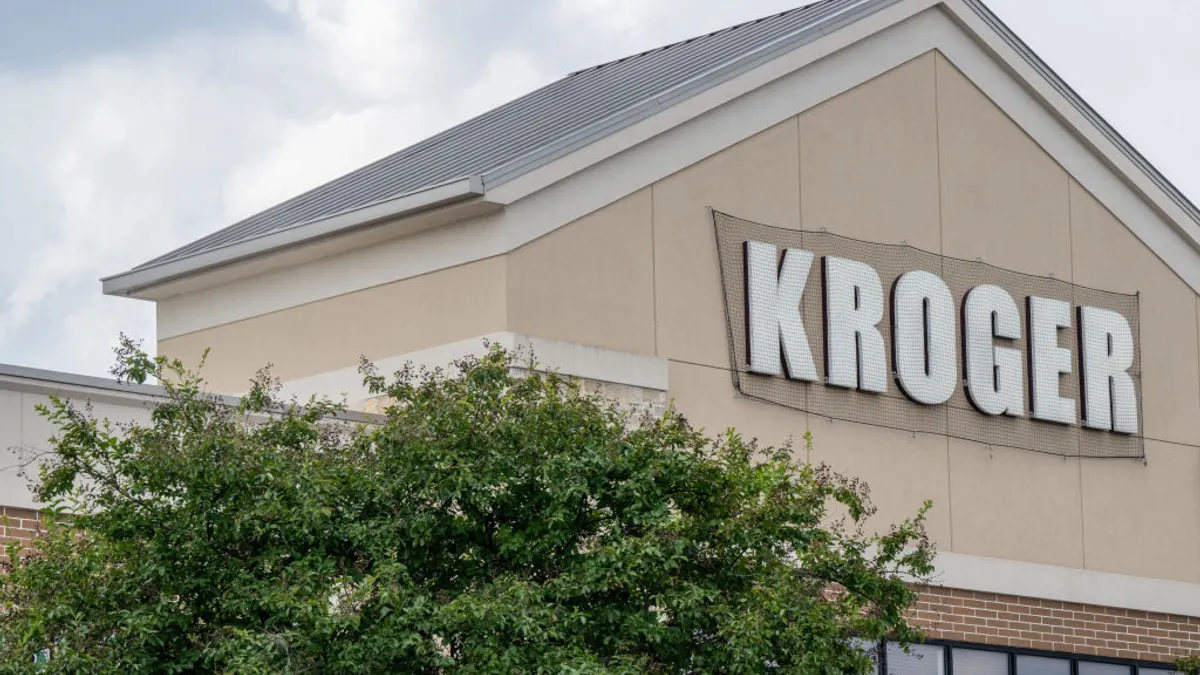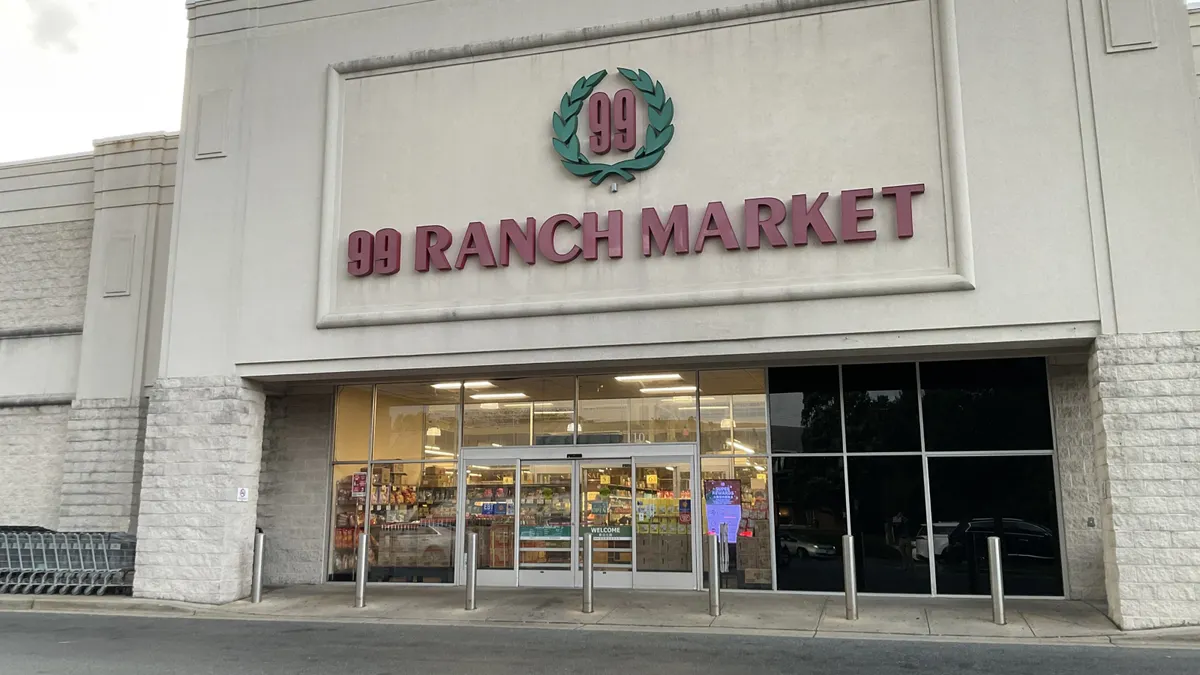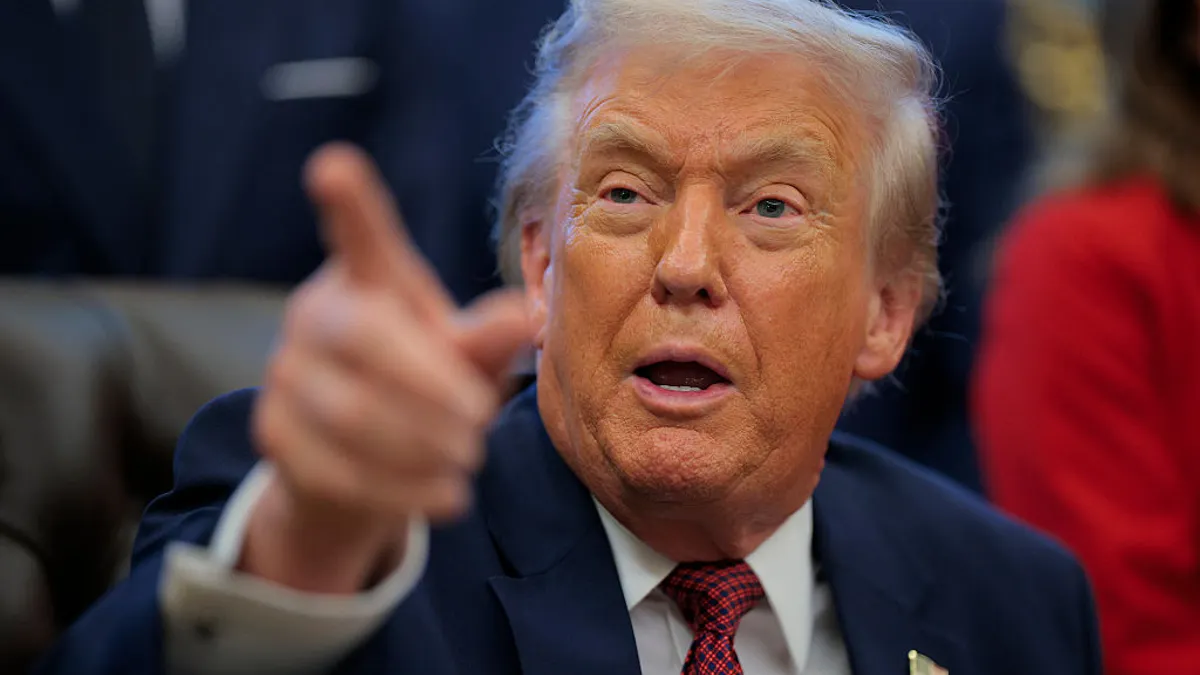Number Sense is a regular column that uses data to help understand the grocery landscape.
At first glance, the sparkling Amazon Fresh store that opened a few months ago not far from where I live in suburban Washington, D.C., appears to be just the kind of supermarket people might want to add to their regular grocery shopping routine.
The location, on the side of a strip mall in Gaithersburg, Maryland, anchored by a Home Depot, is well-kept and bright. Plenty of items are marked as being on sale — and the tech-focused environment, defined by screens and smart carts, is definitely a welcome change from the more traditional shopping experience established supermarkets offer.
But while the store beckons customers with its modern atmosphere and value-focused messaging, its prices — arguably the most important factor in how people decide where to spend their grocery budgets — are harder to figure out from the perspective of the ordinary shopper sizing up the new kid on the block.
On several recent visits to the Gaithersburg Amazon Fresh store, I noticed that some things I routinely buy cost more than long-established supermarkets located less than a 15-minute drive away charge for the same products.
Case in point: On Dec. 8, Amazon Fresh was selling private label 1-pound bags of cut carrots for $1.69 — or $1.52 for shoppers who belong to Amazon Prime. Yet a Giant Food store a couple of miles away and even Amazon’s very own Whole Foods Market offered the identical item for 99 cents — more than 40% less.
I found a similar disparity when pricing a 5.3-ounce cup of Fage Total yogurt at the three stores over the weekend. Amazon Fresh charged $1.89 for that product, while Giant offered it for $1.79 and Whole Foods, which regularly charges $1.89 for that variety of yogurt, had it on sale for $1.25.
Bananas, meanwhile, were 59 cents per pound at Amazon Fresh and Giant, but just 49 cents per pound at Whole Foods. And a 7.5-ounce box of Annie’s cheddar squares cost $4.99 at Amazon Fresh, but just $4.69 at Whole Foods.
Amazon Fresh’s pricing math can be confusing
The fact that Amazon Fresh sells some products sporting Whole Foods’ iconic 365 house brand muddles the pricing equation even more. Granted, the 25-ounce jar of 365 pasta sauce I saw during one of my visits to Amazon Fresh for $2.69 was $2.99 at Whole Foods. But as a consumer, I found myself trying to figure out why I was seeing Whole Foods products in Amazon Fresh — and wondering why I’d only save 30 cents on a product also available at a premium grocery store.
Grocery stores routinely charge more than their competitors for some products while underselling them on others, of course, and my pricing surveys showed that Amazon Fresh offers some standout bargains.
For example, on Dec. 8, Amazon Fresh charged $5.79 for a 24-ounce jar of Rao’s Homemade pasta sauce, and shoppers who belong to Prime could save another 25%, making it just $4.34. By comparison, Whole Foods had the same size of Rao’s sauce on sale for $6.66, or $5.99 for Prime members. At Giant, meanwhile, I would have had to spend $8.99 for the same product — more than twice what it cost Prime members at Amazon Fresh.
But while blockbuster savings like that might attract some shoppers, the company’s approach to pricing — at least on the common items I included in my comparison — suggests that Amazon’s goal with Fresh is focused more on keeping shoppers within its broader retail ecosystem than on winning them over by showing them that the specific items they buy most often are reliably less expensive at its stores.
Indeed, even as it methodically adds more locations to the Amazon Fresh footprint — which now stands at 60 stores — Amazon is testing ways to let shoppers buy goods from Amazon Fresh, Amazon.com and Whole Foods online at the same time and to pick up conventional items at a small store in the same building as a Whole Foods in Chicago.
As Tom Furphy, a former Amazon executive who helped found its online grocery operations, pointed out to me, the company has been moving toward building a more unified experience for shoppers after long keeping its retail channels distinct.
“What Amazon would love is when you have a need, you go to your Amazon app or the Amazon site, and you can solve that need there and or by walking into a physical Amazon location — and just have it be kind of seamless,” Furphy said.
In a reflection of that, Amazon Fresh lets shoppers return Amazon packages at the customer service counter — and gives out coupons for groceries to people who do that — in addition to offering extra savings to Amazon Prime members.
I found it a bit of a stretch to use my Amazon Prime membership to unlock savings in a supermarket, however, because using what amounts to a fee-based loyalty program in a supermarket felt out of place given that other retailers let people join their programs for free. That made it harder to determine whether the low prices I saw on some items during my Amazon Fresh trip were truly money-savers for me.
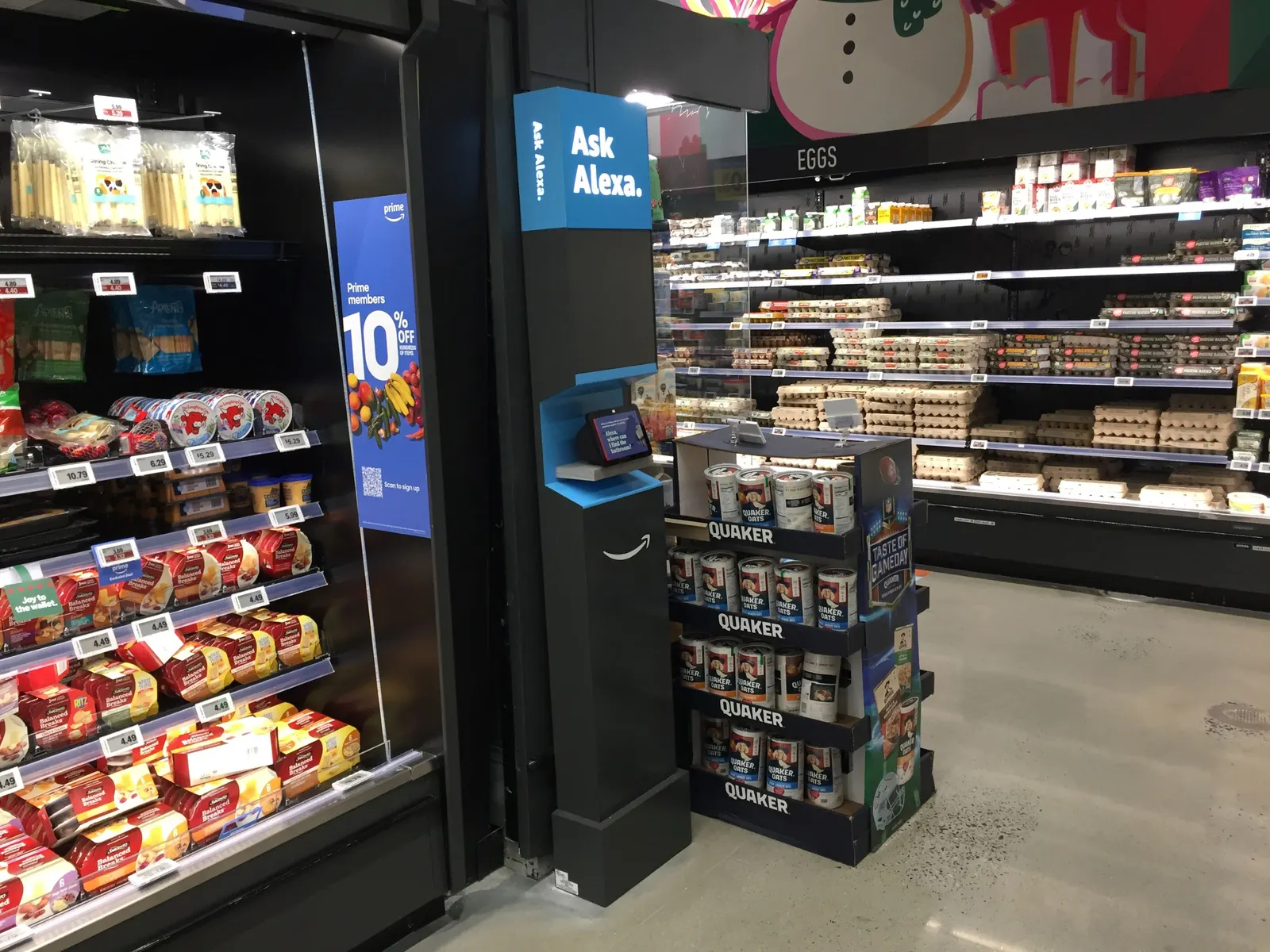
Amazon has acknowledged that its initial, tech-heavy approach to Amazon Fresh was off the mark and rolled out a new store design that added hundreds of products to its stores along with new product displays and other features designed to feel more like, well, grocery stores. The updated design includes self-checkout stations, improved lighting, refreshed signage and other touches designed to help the stores feel more inviting and accessible.
In a statement, an Amazon spokesperson noted that the company has also focused over the last year on providing more savings to shoppers, such as offering “exclusive savings” on more than 3,000 items to Prime members and weekly rotating discounts of up to 50% off “select grocery favorites,” noting it has seen a strong response by shoppers to these steps. In addition, Amazon recently introduced a new private label line aimed at value-focused shoppers.
“Our focus at Amazon Fresh is on delivering exceptional value to all our customers by providing competitive prices and promotions, great quality, and a convenient shopping experience both in-store and online,” the spokesperson said.
The measures Amazon has taken to improve Amazon Fresh’s value proposition might draw shoppers, especially if they tend to analyze their grocery spending from a broad point of view. But for people whose first instinct when visiting a new grocery store is to look at the price tag for items they frequently buy, the chain’s calculations leave open plenty of room for questions about its approach to standing out in a sea of supermarkets.


